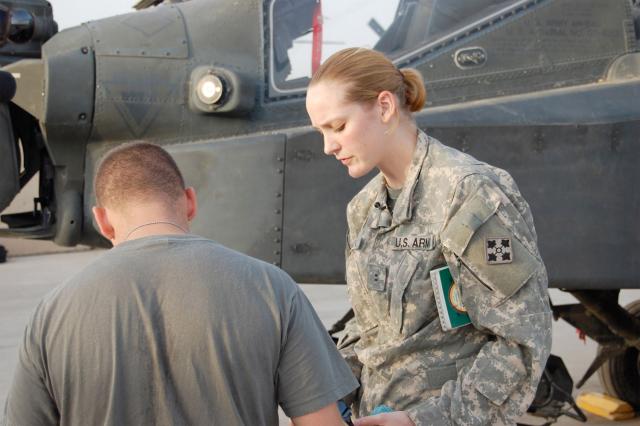
VA site visits focus on women’s care
I returned from Vietnam in 1971, two years before our nation ended the draft and established an all-volunteer force. At that time, only about 42,000 enlisted women were serving on active duty. Four decades later, that number is more than 165,000, and an additional 35,000 women serve as officers. In 2012, women made up 15 percent of the military.
Once limited mainly to clerical and nursing roles, women now fly aircraft and serve aboard submarines. They’re still excluded from units whose primary mission is to engage in ground combat, but let’s not fool ourselves: America’s women in uniform have assumed the same risks as their male counterparts in Iraq and Afghanistan, where enemy tactics frequently turn areas “outside the wire” into combat zones. Women serving today, as the fighting front now surrounds everyone in theater, are combat veterans in every sense of the word.
Even as barriers are removed for women in the military, though, they are leaving active duty only to find that the veterans health-care system has barriers of its own. Since 2000, the number of women using VA health care has more than doubled, from nearly 160,000 to more than 337,000 in 2011. Women are the fastest-growing group of veterans enrolling in the system, and VA Secretary Eric Shinseki admitted early on that the department was late in addressing the surge.
Facing health-care needs unique to veterans who are women – reproductive issues, cervical and breast cancer screenings, and maternity and newborn care, on top of mental health problems related to PTSD and military sexual assault – VA has worked hard to expand its services. It has hired more female practitioners, improved training for women’s health providers, and added private changing rooms and bathrooms at VA facilities to create a more welcoming environment for women.
But what perceptions and obstacles still prevent some women from enrolling? What quality-of-care challenges do women face at VA? And how can VA improve access and quality of care for women? These are questions that The American Legion’s System Worth Saving (SWS) Task Force has been asking during 15 site visits to VA medical centers across the country. As the Legion’s primary evaluation tool for VA health care, the task force conducts a series of visits annually to assess timeliness and quality of care, and to get feedback from veterans. SWS findings are compiled in a report that’s given to the president, members of Congress and senior VA officials.
The 2012-2013 SWS report will focus on women’s health-care programs in VA. With seven visits completed, the task force is heading next to Salem, Va.; Las Vegas; Coatesville, Pa.; San Antonio; Madison, Wis.; Spokane, Wash.; and St. Cloud, Minn. In each department, Legionnaires are encouraged to participate in a town hall meeting and VA site visits, where they can offer valuable insight into the issues and concerns of local veterans. Call the Legion’s Washington office at (202) 861-2700 to find out more, or go to www.legion.org/systemworthsaving for a schedule of site visits.
Every veteran, man or woman, is a stakeholder in VA. The SWS Task Force visits are a rare opportunity to communicate to our nation’s leaders and VA what’s working and what’s not. Let’s get involved.
